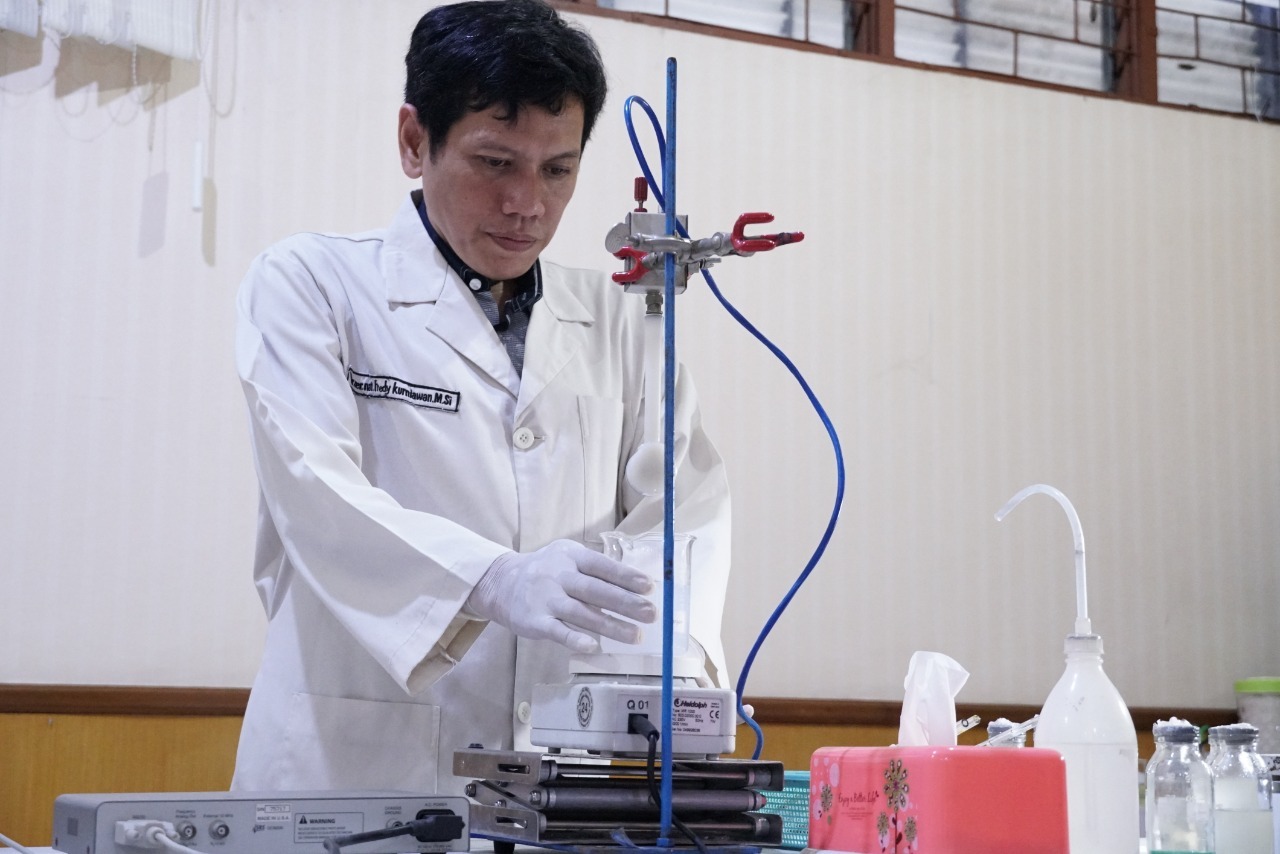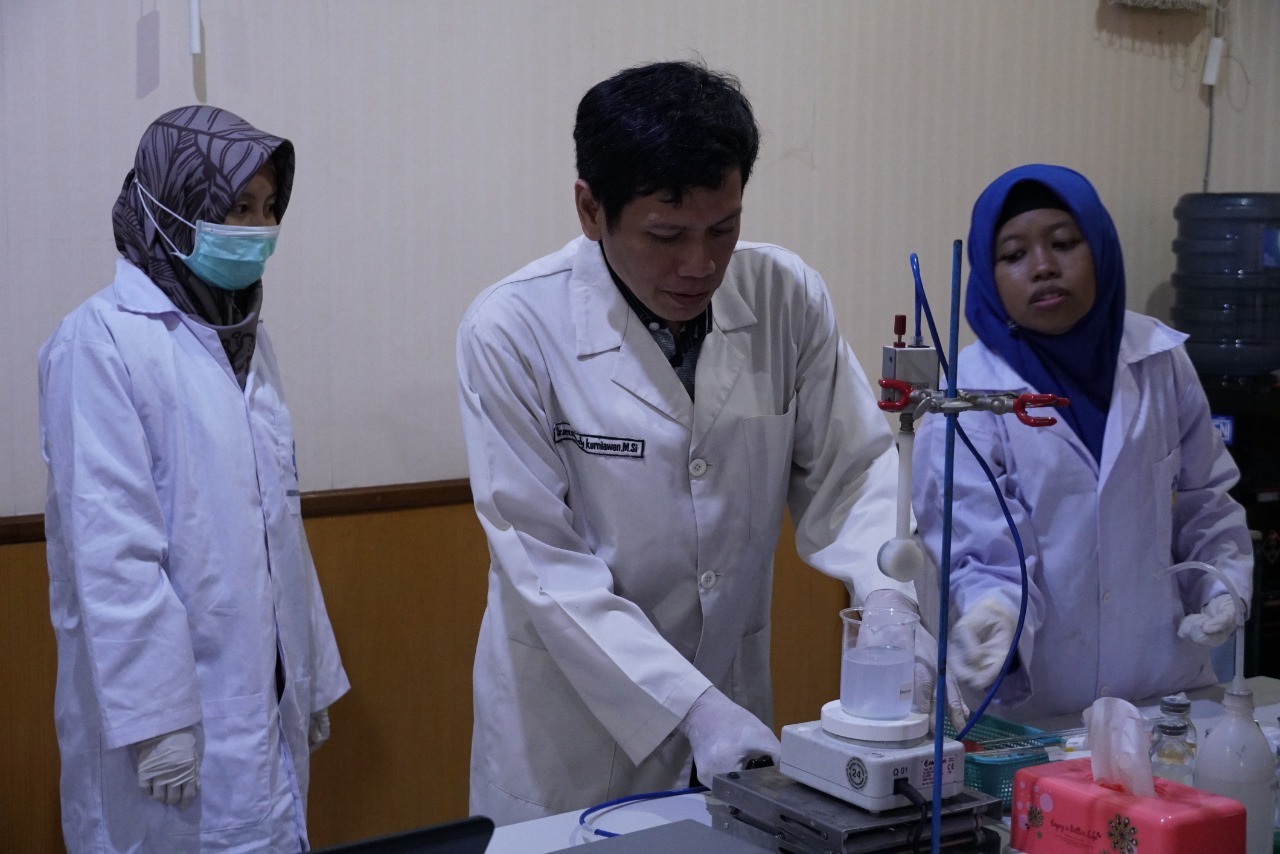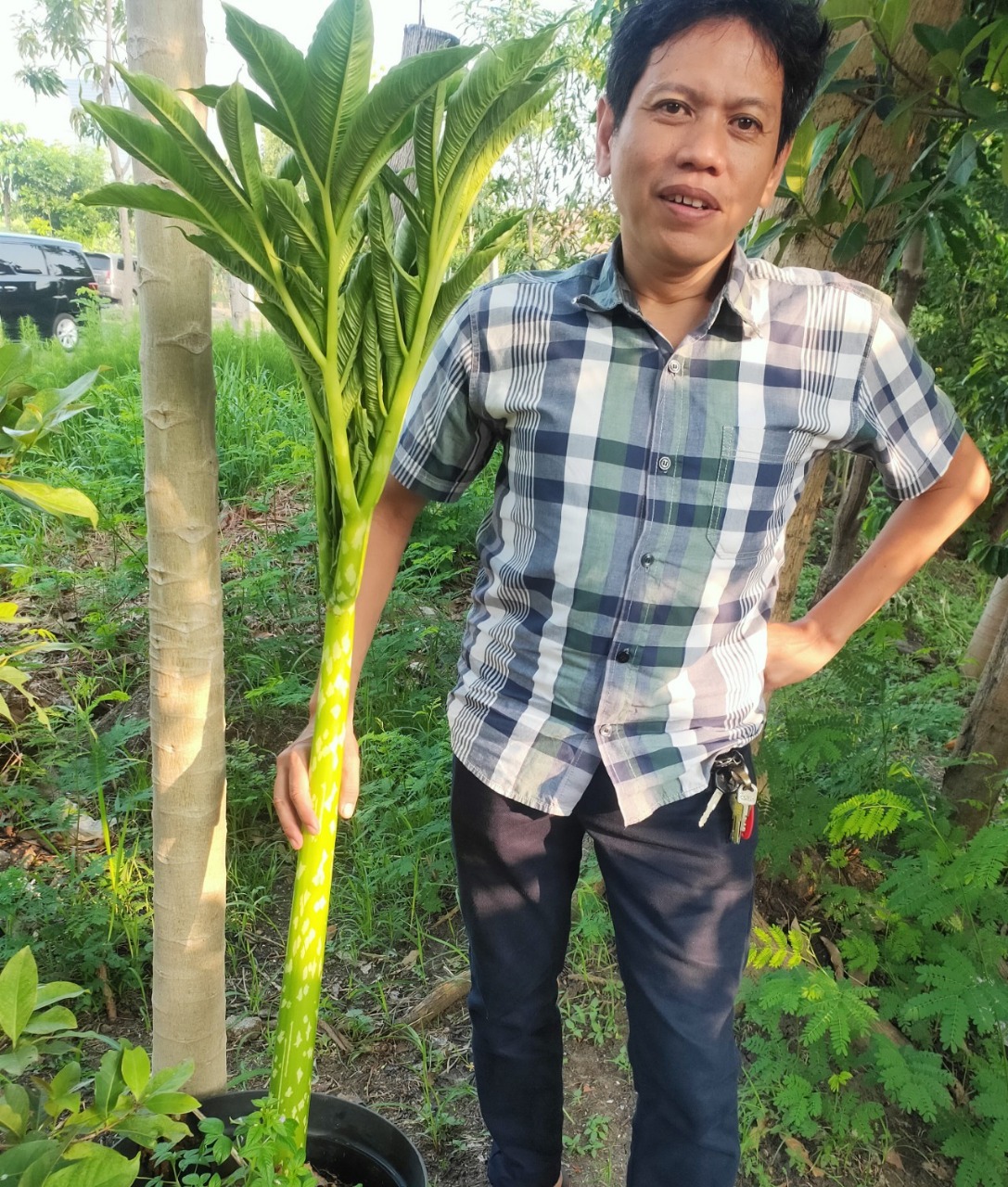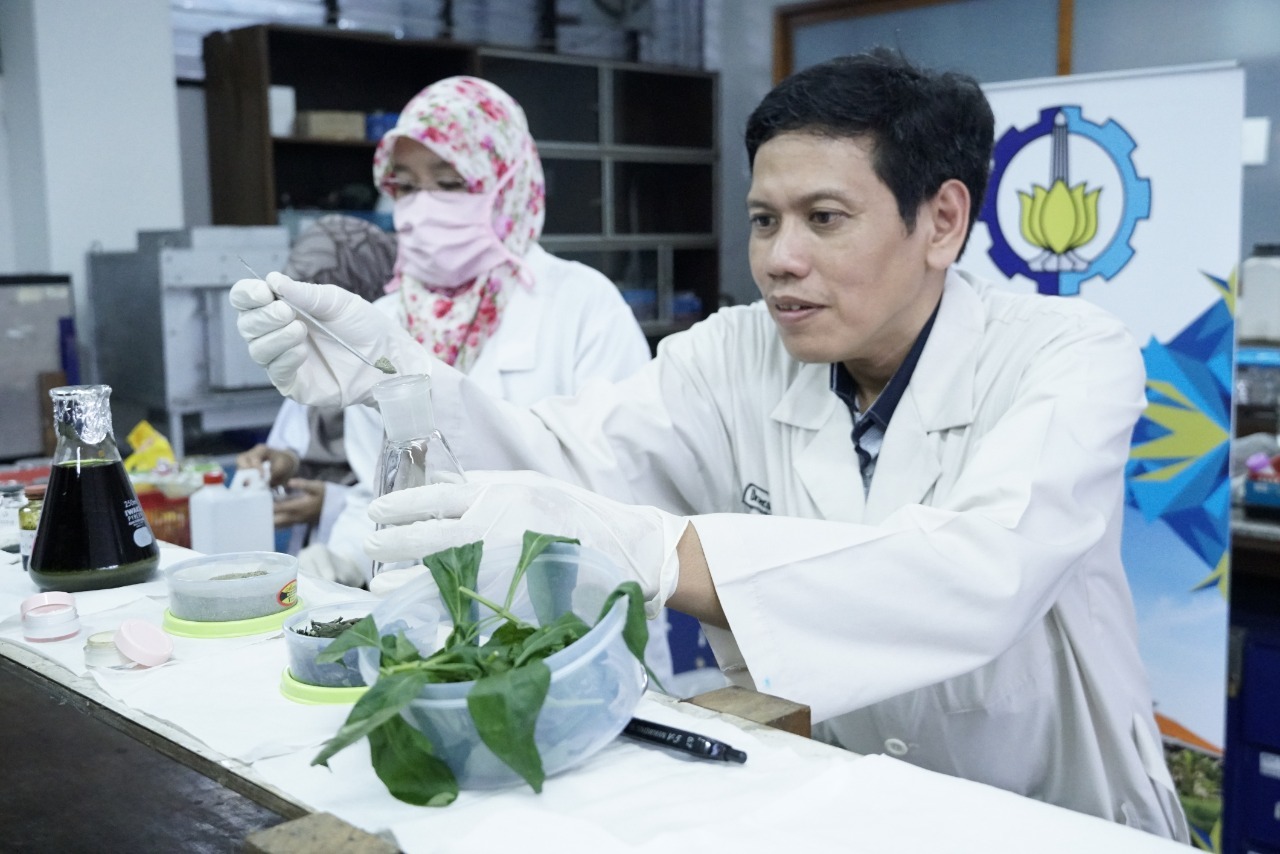ITS Profesor Created Various Innovations in Chemo and Biosensor Field

Prof. Fredy Kurniawan conducting the trial of pig gelatin sensor
ITS Campus, ITS News – Innovation has never been stopped created from the civitas academica of the Sepuluh Nopember Institute of Technology (ITS). One of them by Prof Dr RER Nat Fredy Kurniawan MSi has created a lot of innovations based on chemo and biosensors ranging from the field of medical, agriculture, to halal.
Through his research findings, the professor in Chemo and Biocensor who will be officially confirmed by ITS, Wednesday (12/2), would like to be able to help humans in the field of detection and analysis on an object applied to various fields.
In his scientific oration, the chemical lecturer explained that chemo and biosensors have the function to detect the analysis or target by giving signals. The difference is it only lies in the involvement of biological components. “So its function to sensing something, the target depends on the case,” he added.

Prof. Fredy Kurniawan (center) while conducting the test of the pig gelatin sensor with his student team
The 124th professor of ITS mentions six studies in his scientific oration, which are the freezing point indicators, glucose sensors, dopamine sensors, sucrose sensors, pig gelatin sensors, and also the sensory sensors. The man who is familiarly called Fredy reveals that in fact there is still a lot of other research, but he only mentioned six research.
In his research on the freezing point indicator, Fredy said that his primary purpose was to address the problem of polio vaccine storage. The Polio vaccine should be stored at temperatures between 0 – 10 °c. Outside the TE-temperature
Seeing this, the head of ITS Department of Chemistry makes it an indicator that is attached to the vaccine during storage. “The vaccine that has not been damaged will be red, if it has undergone a change in its red color temperature will disappear which indicates the vaccine has been damaged,” he explained. According to him, this research is simple but very useful.
Subsequent research is glucose sensors. Fredy said that if glucose sensors generally use enzymes. This time, however, the lecturer, born 28 April 1974, was able to make the sensor using the active material in the form of gold nanoparticles to detect glucose. “Sensors can be used repeatedly and can be cleaned under severe conditions,” he explained.
In addition, Fredy also reveals there is research on dopamine sensors. According to Fredy, knowing dopamine levels is very important, because dopamine deficiency can cause brain disorders such as Parkinson’s or schizophrenia. Dopamine itself is a group of catecholamine hormones that have important functions in the central, renal, and hormonal nerves, and the cardiovascular system. “This dopamine compound is important because it serves to a sense of happiness and positives, to detect the low height can be through blood or urine,” explained Fredy.

Prof Dr Fredy Kurniawan MSi with Iles-iles plant used as research material
Not only in the medical field, but Fredy also managed to create a sucrose sensor aimed at agricultural fields. Sucrose can be seen every day, such as sugar in the kitchen that is usually made of sugarcane. In the manufacturing process, for sugarcane to the plant should be measured and calculated the content of sucrose in it. Because farmers can not measure the levels of sucrose, the price of sugar is always set by the plant.
“At that time I thought how we had a sensor that was easy to use by farmers, so they wouldn’t be easy to get lied to,” Fredy said. He and his team have made a biosensor for sucrose by involving invertase enzymes. “By simply dripping the cane samples at the end of the sensor, the Sukrosanya content will be directly measured,” he said.
Not only that, but Fredy also manages to find a pig gelatin detection tool, which currently has many pig gelatin in the community. “The reading with the tools we made is only by looking at the frequency shifting, where the positive or rising frequencies indicate the presence of pig material on the sample, and negative or brainstorm frequencies indicate the presence of material from cattle on the sample,” he explained.

Prof. Fredy Kurniawan doing one of his research in laboratories at ITS Chemistry Department
Lastly in his scientific oration, Fredy also creates a sensory sensor. He explained that the level of spicy chili pepper was different, so he also innovated to create sensors to know their degree of concentration. “Our team has managed to make a very modified gold-based pungency sensor that replaces the human senses to measure the spicy flavor in chili peppers,” explained the lecturer who received the degree Doctor rerum Naturalium (Dr. RER. Nat.) from Regensburg University, Germany.
Through its various innovations, Fredy wants to make products that are more affordable in the community and can be beneficial to many people. “Although the public knew me, I felt my research could not be felt directly by society,” he said when interviewed in ITS Department of Chemistry.
In the end, Fredy conveys that the happiness of a researcher is actually when the research product they produce can be perceived by others and provide more value for them. (meg/Anjani/ITS Public Relation Officer)
Related News
-
Faithful in Times of Joy and Sorrow, Married Couple Graduate with Doctorates Together at ITS
ITS Campus, ITS News — As though guided by one heart and one soul, Dr Hanugra Aulia Sidharta ST
February 10, 2020 20:02 -
ITS Wins 2024 Project Implementation Award for Commitment to Gender Implementation
ITS Campus, ITS News —Not only technology-oriented, Institut Teknologi Sepuluh Nopember (ITS) also show its commitment to support gender
February 10, 2020 20:02 -
ITS Professor Researched the Role of Human Integration in Sustainable Architecture
ITS Campus, ITS News –The developing era has an impact on many aspects of life, including in the field
February 10, 2020 20:02 -
ITS Sends Off Group for Joint Homecoming to 64 Destination Areas
ITS Campus, ITS News — Approaching Eid al-Fitr, the Sepuluh Nopember Institute of Technology (ITS) is once again facilitating academics who want
February 10, 2020 20:02
